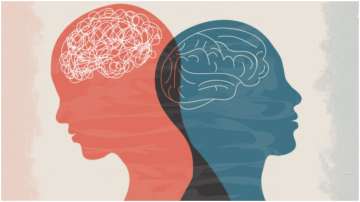Bipolar disorder is a brain condition that an individual suffers mentally. It directly affects a person’s mood, thinking ability, energy, and behaviour. Most people who have bipolar disorder go through two moods, one is mania and the other is depression. It is widely believed that people of age 25, teens, and children are more likely to have bipolar disorder. The illness can be diagnosed with an interview, physical examination, or lab test. Let's discuss its causes, symptoms, types, and treatment in detail:
Causes
There is not one solid factor that causes bipolar disorder but a few, including:
Stress: A manic or depressive episode can be triggered by a stressful incident such as a death in the family, an illness, divorce, etc. Thus, a person having stress may develop this illness.
Genetics: It is assumed that the chances of developing bipolar disorder are increased if a child’s parents or siblings have the disorder. But it is not true because there are studies that indicate that a child from a family with a history of bipolar disorder may never suffer from the problem.
Brain structure and function: Researchers have identified that there is a subtle difference in the average size of the human brain having bipolar disorder than a normal mind.
Types
Bipolar I Disorder: People suffering from bipolar disorder I go through both mania and depression. In such cases, depression cannot be diagnosed. While the treatment of mania takes at least seven days to be diagnosed or in the case of severe maniac problems a person requires hospitalization.
Bipolar II Disorder: In this case, people experience depressive episodes of hypomania, but never a “full” manic episode.
Cyclothymic Disorder: It causes a chronically unstable mood state in which people experience hypomania and mild depression for at least two years.
Bipolar Disorder Unspecified: “Other specified” or “unspecified” condition is when a person does not meet the criteria for bipolar I, II, or cyclothymia but still experiences significant abnormal mood elevation.
Symptoms
- A person who is facing trouble with bipolar has two kinds of problems, manic and depression which develop over time without hinting at any symptoms. But, a person with severe bipolar condition undergoes hallucinations or delusions that tell about a person's extreme mood.
- A person diagnosed with mania, experiences at least one episode of mania or hypomania where they have different moods like irritability, unpredictable behavior, suicidal thoughts, and impaired judgment. They are unaware of their actions and their consequences. People having hypomania have milder symptoms as it does not include psychotic episodes. They act well at social gatherings and other events. People who are facing mania and hypomania in their lives are often facing some kind of trouble, while some may experience it rarely.
- Whereas, a person diagnosed with depression faces a lot more problems. As it weakens them and they find it difficult to even come out of bed. It creates problems in the normal sleep cycle as the person cannot sleep properly. It also causes a problem in decision-making. They may become obsessed with feelings of loss, personal failure, and helplessness or this negative thinking can lead to thoughts of suicide.
Treatment
- If a person does not get the proper treatment at the beginning, there is a chance that the case worsens. Usually, physiotherapy, medication, and a healthy lifestyle can help to deal with this dysfunction.
- Psychotherapy, like cognitive-behavioural therapy and family-focused therapy, may help to deal with the problem.
- Medications, such as mood stabilizers, antipsychotic medications, and antidepressants can also help.
- Self-management strategies, like education and recognition of an episode’s early symptoms, play a good role in controlling this illness.
Disclaimer: Tips and suggestions mentioned in the article are for general information purposes only and should not be taken as professional medical advice. Please consult a doctor before starting any fitness regime or medical advice.
